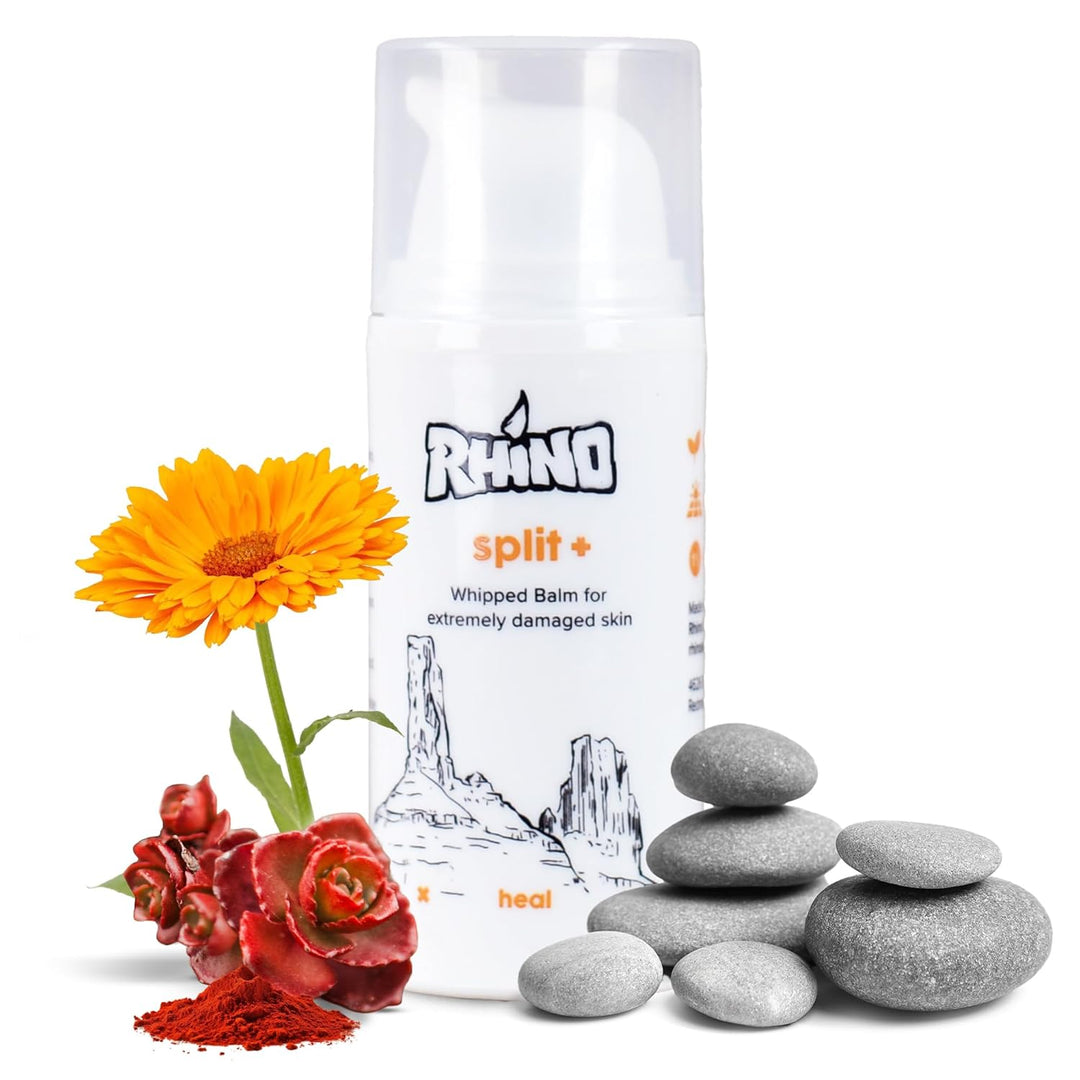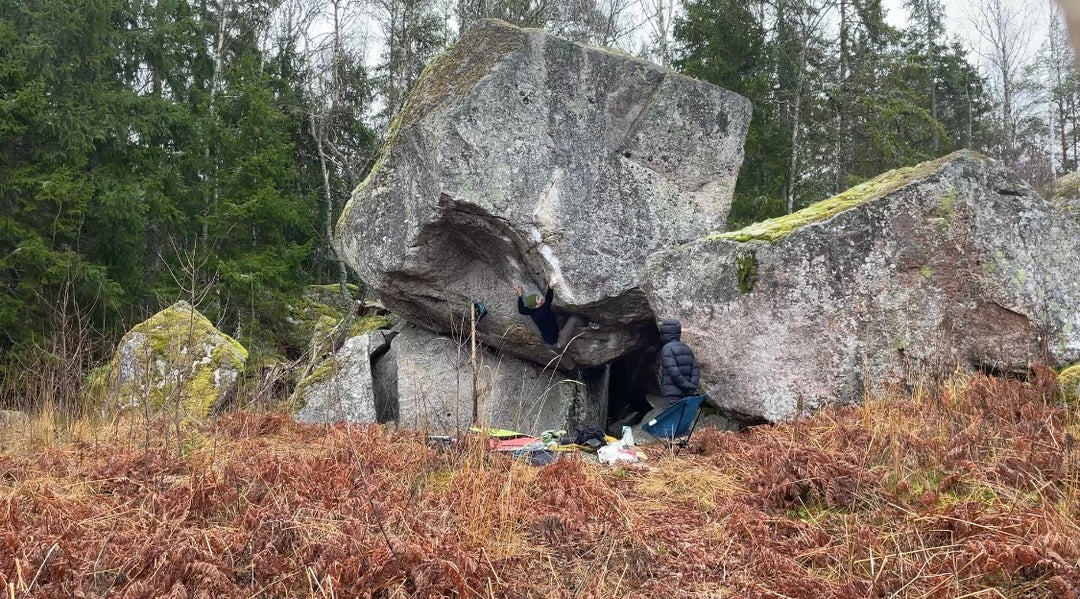Tactics for Winter Climbing at Smith Rock

Many Oregon climbers choose to leave the state during the winter months in search of pleasant temperatures and consistently dry weather. Some head to Red Rocks or Joshua Tree, while others go as far as Hueco and beyond. While these are all worthy winter destinations, Smith Rock, Oregon’s premier sport climbing destination, boasts fantastic conditions most days of the winter, and should not be overlooked. With the proper tactics, winter can be the best time of year to climb at Smith Rock. This year will mark my 5th winter here at Smith, and each year I become more and more accustomed to managing the variable conditions. Now, it’s my favorite season. Here are some of the best tips I’ve picked up.
To start: embrace the chaos, expect the unexpected, and adapt. Even veteran Smith climbers will tell you that the climbing conditions at Smith in the winter can be wildly unpredictable. One moment you’ll be shirtless and in shorts and beginning to question if it is too hot to get on your project, and the next thing you know you’re numbing out as the sun gets covered by clouds and the wind picks up. Another time you may get stuck in a snow flurry for 20 minutes, only to have the clouds depart revealing sun and perfect temps for the rest of the day. Don’t expect the forecast to help you either, as the main area of Smith Rock truly has a micro climate of its own, and this microclimate is not reflected in the forecast. The key is patience and preparation.
I often find that if I plan for one kind of weather at Smith, I will get the other. This is why I write ‘embrace the chaos’. You must expect the unexpected, and you must be prepared for an entire year’s worth of weather in just one day of climbing. I’m talking rain, frigid wind, scorching sun, snow, fog…you name it. To some, this element of chaos may make Smith seem like an unworthy winter crag, but I can assure you that if you bring the right wardrobe and know where to go, you can climb at Smith Rock roughly 9 out of 10 days during the winter
If anything, the threat of unpredictable lousy weather benefits the hardened winter Smith connoisseur by dissuading other less-savvy climbers from making the drive down from Portland or Seattle for the weekend. If you dial in your tactics, you can enjoy great conditions, small crowds, and a stoked community of local crushers all winter long. Here’s how.Â
- Check the CamÂ
The best conditions report, of course, is calling a climber who is already at the cliff and getting their report, but the Smith Rock live cam is a close second. I have it bookmarked on my phone and computer and I check it constantly, even when I don’t plan on going climbing. I love the cam so much that I keep a folder of screen shots of it on my computer to look back on. You don’t have to love it as much as I do, but you should certainly use it when considering a trip to Smith in the winter. As I’m writing this, the cam looks like this:

So good. Why am I not out there!?
My main use for the cam, besides day dreaming, is checking it in the morning before I climb to adjust when I leave Bend. For example, if I check it at 7am and it is still foggy and cold but I can see the sun poking through, I’ll hold off for an hour or two and plan on an afternoon session. On the other hand, let’s say I wake up expecting it to have snowed but instead see clear skies and sunshine? In that case, I’m jumping out of bed and heading straight to the cliff. Like I said before, adapting to conditions is key, and the cam is a helpful tool for making quick decisions on when to get out and climb. You gotta get it while you can. Â
- Bring Layers for Every Occasion
Even as someone who considers themselves a moderately seasoned winter Smith climber, I still get schooled by its unpredictable weather. Just this last weekend I arrived on Saturday expecting a bluebird 40-degree day and no wind. With sunny weather in mind, I opted to pare down my normal winter climbing kit and neglected to bring my hand warmer and insulated belay pants. My confidence in predicting the weather was quickly punished, however, as I walked into the canyon and was met with cloud cover and a bitterly cold wind. Next thing I knew, I was numbing out on the upper portion of 9 Gallon Buckets and cursing myself for my poor preparation. Aside from some spots of sunshine where I could squeeze in a good burn or two, I spent a good bit of the day uncomfortably cold, especially while belaying. Then, on Sunday, which was forecasted to be even colder than the day prior, I waddled up to the cliff in long-johns, puffy pants, and a base-layer, under a fleece, under a down vest, under a puffy jacket, under a shell, with my electric handwarmer turned up all the way up, only to be met with NO wind, NO cloud cover and a BLAZING hot sun. I immediately stripped down and climbed in only shorts, and before I knew it, it was too hot to climb on anything hard on Morning Glory and I went packing for shade. Although this outcome was preferable to the day before, it emphasizes the unpredictability of Smith’s winter conditions. Humility and preparation are key to thriving at Smith in the winter, because most attempts at predicting the weather and leaving kit behind accordingly, will be punished. My solution? Bring layers for every occasion, every time you climb in the winter. I always come prepared with:
-long-johns
-insulated belay pants
-extra warm belay jacket
-a vest to climb in when it’s really cold
-a fleece and windbreaker that I can comfortably climb in
-shorts, for when the sun comes out.
-hand warmers.Â
-a warm beverage, like tea.
This kit can indeed be cumbersome to pack in and out, but when the dark clouds roll in and the wind picks up and you suddenly see droves of shivering climbers hoofing it home with their tails tucked between their legs, you’re going to be standing there at a suddenly empty crag, thanking me, toasty and ready to send in primo cold temps.

3. Crag selection
Crag selection is key to winter climbing at Smith. As far as the main park goes, most would agree that Morning Glory is the winter mecca of Smith Rock. It is certainly where I begin most of my winter climbing days. On any sunny winter day, Morning Glory gets immediately baked by the sun, which continues to beat on the wall for a majority of the day. With no wind and unobstructed sunshine, I have climbed shirtless when it is in the 20s at Morning Glory. The wall seriously reflects and multiplies heat! Morning Glory can quickly become too hot, even in winter, and it is not uncommon to find yourself desiring colder temps for Smith’s many small holds.
When Morning Glory gets too hot and the temperature is in the 30s to low 40s, I would advise heading to the Dihedrals where, in the mid-morning, there is a healthy mix of indirect-sun and shade, and a wide variety of climbs to choose from.Â
When the weather gets into the mid 40s and above, even the Dihedrals can get too warm, in which case you should consider bundling up and heading over to the Christian Brothers for crispy sending conditions and lots of shade in the mid-morning. If you opt for this, then you can easily return to the Dihedrals in the mid afternoon, when the large panel-climbs, which have now been gently heated by the sun for the majority of the morning, are in the shade and prime for sending.
For warm winter days with lots of sun and no wind, the Aggro Gully can be a good option for the later afternoon, say after 2pm, when the rock gets suddenly bathed in sunlight, making for very pleasant conditions.
This knowledge, combined with the kit I described above, can make any sort of winter day at Smith a productive one.Â

4. Get warm stay warm
Every climber has a different tolerance for climbing in the cold. I personally find myself numbing out pretty easily. The key to cold weather climbing for me is staying properly warm, this comes down to a combination of having the right clothing, climbing in the right spot at the right time, and not letting yourself get too cold while belaying your partner.
While during warmer seasons I may need to only do one or two warm ups before getting on a challenging climb, in the winter I commonly opt for doing 4-5. This weekend for example, in preparation for trying the classic Churning in the Wake, I climbed two 5.9s, a 5.10, a 5.11 and a familiar 5.12 before giving a solid attempt on Churning. Despite it being cold, my preparation kept me from numbing out.
Another important tactic for staying warm is breaking away from the traditional one-climb-at-a-time rule. For example, if my project is currently in the shade and too cold, I will let my partner warmup properly, rest a bit, and then get straight on their project before I even tie in. Then, when my climb warms up, it will be my turn to climb and my partner will move into a supporting role for me. Coordinating with your partner to plan your warm up and climbing schedule around each other’s goals for the day is vital to successful Winter climbing days at Smith.Â
 Another important point is to make sure you keep your core warm while climbing. When it gets truly frigid, my best advice is to climb in long johns and a fleece hoodie, along with a puffy vest that has a hand warmer in the chest pocket. I cannot stress enough how well a handwarmer in your chest pocket works to keep your entire body warm while climbing. I find this combo especially crucial for recovering at rests on a climb when it is cold out. You may finish up a crux and arrive at a rest only to find yourself totally numb, but thanks to your handwarmer you will be able to get all the feeling back in your fingers and carry on. Without the hand warmer and vest in this situation you may reach the rest only to be too numb to recover and continue. Finally, before pulling onto my climb I like to bust out a few pull-ups, push-ups, and jumping jacks to get myself extra warm when the conditions are extra cold.
- When to Call ItÂ
I truly believe that Smith is a fantastic winter crag, but there are some times when you just can’t climb. For example, if you wake up and check the cam, and you can barely see the Picnic Lunch Wall due to snow and or fog, it’s safe to say climbing conditions will just be too cold and damp that day. If you see the temp is in the low 30s to 20’s and it is overcast and windy, it’s likely going to be too cold to climb. I have observed on several occasions a thick damp mist that can hang in the main area and coat the already greasy crimps and nubbins with a slick dew—when this is the case, I opt for the gym instead of risking horrendous wet-fires and foot pops.Â
Here’s an example of when I’ve steered clear:

23 degrees and sticking snow? PASS.
- Skin Care
Winter at Smith requires you to have your skin prepared for both cold conditions in the shade and warm conditions in the sun. I personally have naturally wet soft skin and tend to not deal with splits very often. Because of this, my biggest climbing skin-struggle is getting thin sweaty tips when climbing in any kind of warmth. If my skin is quite soft at a given time it will climb great in the cold, but get very slippery in the warmth. On the other hand, if I use a lot of Rhino Dry and Performance on my rest days my skin will climb a lot better in the warmth, but can feel painful and hard, and risk splitting when it gets really cold. To straddle these two realities, my protocol in the winter is taking care to create tough, durable, flexible skin that can perform when warm or cold and is not overly dry. I do this by filing down thick calluses to avoid flappers, always wearing gloves when washing dishes, avoiding long hot showers or hot tubs, and using Rhino Repair cream every night, with Performance mixed in probably 4 times a week. If I end up hot tubbing one weekend or indulge in a heavy dishwashing session without gloves and I feel like my skin needs a reset, I will use dry for a few days and then reassess. These guidelines help me keep my skin prepped for whatever conditions I may encounter on any given winter climbing day at Smith.Â
In Conclusion
Let me finish by saying that the only way to really dial in winter climbing at Smith is by getting out there, staying positive, and occasionally suffering. With that said, the techniques I’ve picked up over the years from trial and error and from other locals’ knowledge are sure to help you be more comfortable than you would be otherwise. I hope these tips can help you get after it at Smith all winter long. Personally, winter has become my favorite and most productive season there. Unless something changes, I’ll keep saving my climbing trips for summer when Central Oregon often turns into a smoky 100+ degree hellscape.





Leave a comment